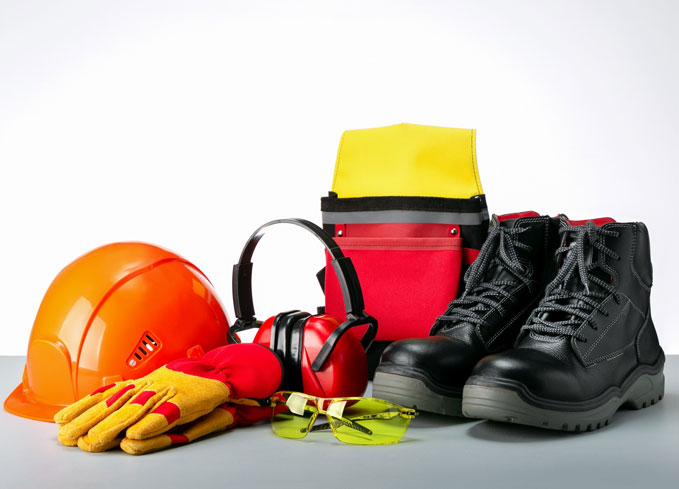Personal Protective Equipment (PPE) plays a critical role in safeguarding individuals from various occupational hazards. Whether in construction, healthcare, manufacturing, or any other industry, PPE acts as a crucial line of defense against potential injuries, illnesses, and even fatalities. This article explores the significance of PPE and highlights its essential components to create a safer working environment.
Understanding the Role of PPE:
PPE serves as a protective barrier between workers and potential hazards in their workplace. It encompasses a range of equipment designed to minimize the risk of exposure to physical, chemical, biological, or radiological hazards. By wearing the appropriate PPE, workers can significantly reduce the likelihood of accidents and injuries, ensuring their well-being.
Key Components of PPE:
Head Protection: Helmets, hard hats, or bump caps shield the head from falling objects, electrical shocks, or impacts.
Eye and Face Protection: Safety goggles, face shields, or visors safeguard against debris, chemicals, splashes, and optical radiation.
Respiratory Protection: Masks, respirators, or air-purifying devices filter out harmful particles, gases, vapors, or fumes, ensuring clean and breathable air.
Hand and Arm Protection: Gloves, gauntlets, or sleeves shield against cuts, burns, abrasions, chemicals, or biological agents.
Body Protection: Coveralls, aprons, vests, or suits provide protection against various hazards, including chemicals, flames, extreme temperatures, or biological contaminants.
Foot and Leg Protection: Safety boots, shoes, or leggings protect against impacts, punctures, slips, or electrical hazards, ensuring the safety of feet and legs.
Selecting and Using PPE:
Hazard Assessment: Conduct a thorough analysis of workplace hazards to identify the appropriate PPE required for each task or environment.
Proper Fit: PPE should fit well and be adjusted to individual users to ensure maximum protection and comfort.
Training and Education: Provide comprehensive training on the proper use, maintenance, and limitations of PPE to ensure workers understand its significance.
Regular Inspection and Maintenance: Regularly inspect and maintain PPE to ensure it remains in good condition, replacing any damaged or worn-out components.
Compliance with Standards: Ensure that all PPE meets relevant safety standards and regulations to guarantee optimal protection.
The Benefits of PPE:
Injury Prevention: PPE significantly reduces the risk of workplace injuries, protecting workers from potential harm.
Increased Productivity: When employees feel safe and protected, they can focus better on their tasks, leading to enhanced productivity and efficiency.
Compliance and Legal Requirements: Utilizing appropriate PPE ensures compliance with health and safety regulations, preventing legal issues and penalties.
Enhanced Employee Confidence: Knowing that their employer prioritizes safety and provides adequate protection instills confidence in employees, fostering a positive work environment.
Conclusion: Personal Protective Equipment (PPE) is a vital aspect of workplace safety, offering protection against a wide range of occupational hazards. By recognizing the significance of PPE and implementing comprehensive measures, employers can create safer working conditions, promote employee well-being, and mitigate potential risks. Remember, investing in the right PPE today can save lives and build a stronger, more secure tomorrow.

